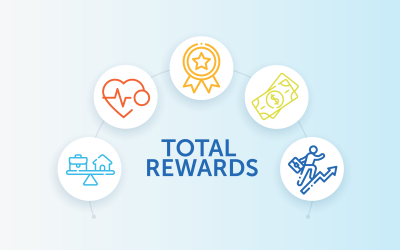Everyone approaches work differently. It’s like the old knapsack problem in math: There are a thousand ways to pack a knapsack, but one optimal way.
On any given job assignment at your company, there probably is an optimal process to follow that will make the most profit. So how does your company decide which employees get tasked with what jobs? Improving the way you assign work can be the first step toward optimizing employee profitability.
The Employee Profitability Formula
Employee profitability is defined as “optimizing units of work by type and volume when assigning work to employees, in order to maximize productivity.” To predict how to maximize productivity using workforce analytics, we create an employee profitability formula using a general assignment algorithm. By factoring in relevant employee characteristics with attributes of the work, we can come out with something akin to finding a perfect match.
Take for instance a company that handles outstanding tax notices. Using the example of a researcher role, that employee has to research tax notices with different attributes such as:
- Jurisdiction
- Level of complexity
- Levels of priority
- Dollar amount
- When notice was received
The predictive talent metrics of an employee who can optimally research and close all those notices will include:
- A particular set of skills
- A certain level of experience with the different types of notices
- The volume of work he or she can produce in a defined amount of time (For example, how many tax notices will that researcher typically close in an eight-hour day and which type — low priority, high priority, complex versus less complex.)
Scoring Each Factor
All work attributes have values that equate to the level of profitability. We prioritize the values and assign a score to each. Then, we score employee abilities according to their value. There usually are time factors that also get scored (for example, how quickly a person can complete a unit of work). The algorithm’s job is to match up the work scores and employee scores to maximize efficiency.
Examine Your Workforce
Let’s be real. If you’re a business manager (or an HR executive supporting that business), you have to look at your people in terms of value. Every employee is tied to profitability, and every job they do can be equated with a monetary value. The trick is to tie the two together to maximize efficiency, making the most profit for your company.
The ZeroedIn Value
ZeroedIn brings workforce data to the front lines in a way that’s meaningful and useful. Our strength is not only in the data science, but also in our ability to turn that data into real insights that drive value. We bring valuable insights every day through workforce analytics to one of the largest consumer retail companies in the U.S. and we can do the same for your company.




